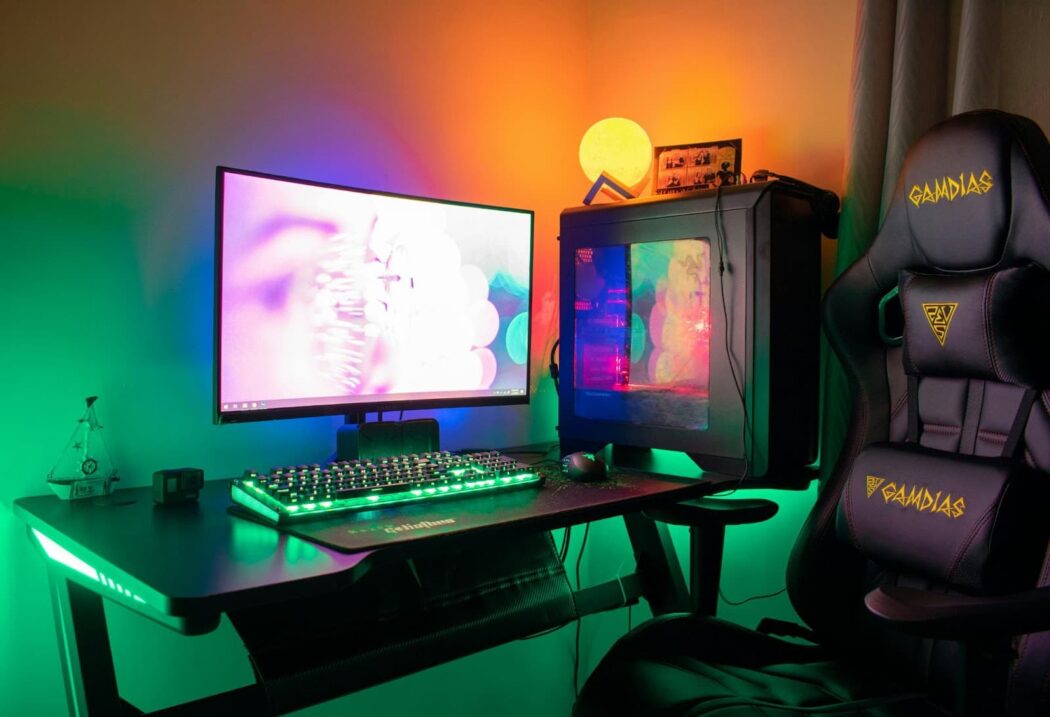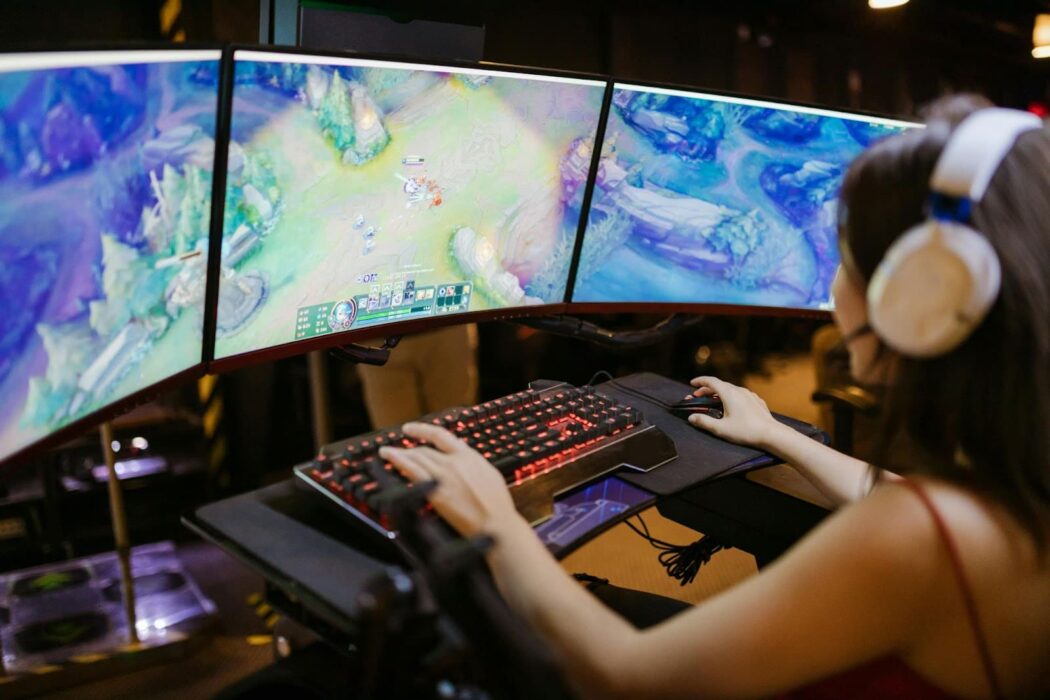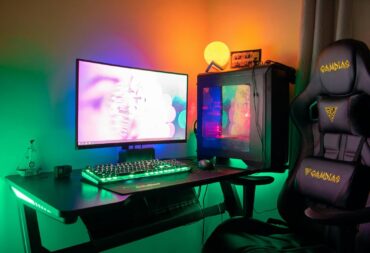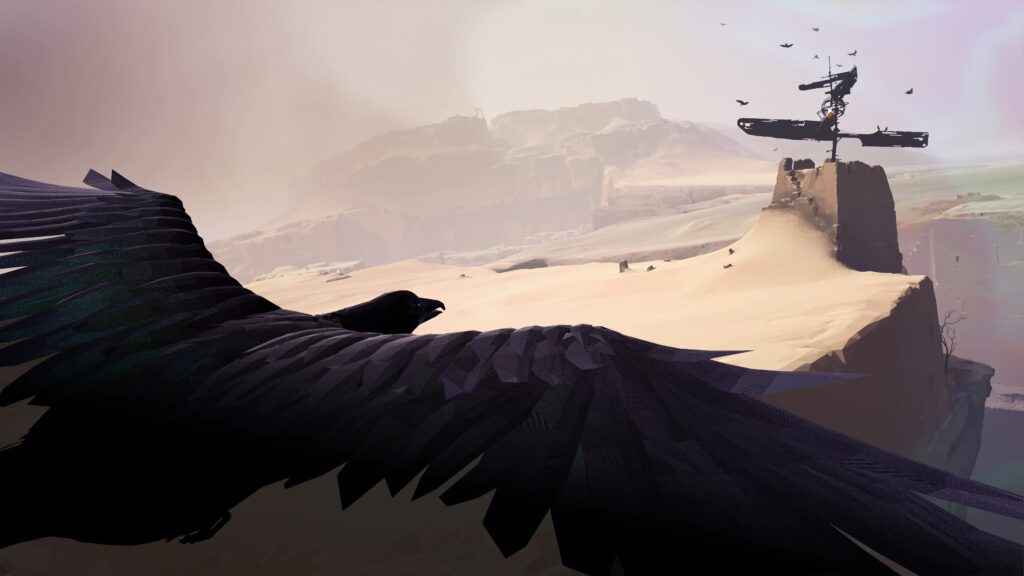
Vane’s debut trailer, shown during PlayStation Experience 2016, looked gorgeous. Even though the game looked like another attempt by indie developers to make their Journey, the project’s visuals were instantly captivating. Vane seemed like a beautiful adventure in the vein of Ico and The Last Guardian that would hardly be as memorable, but could at least brighten the evening and leave a pleasant aftertaste.
During development, however, it appears that something went wrong. The game can really impress with its sights, including in the starting location, where, as a boy with some valuable item in his hands, you run to the tower and try to get into it in time. The lightning flashes all around, destroying the floor, the wind blows all sorts of garbage aside, the chamber shakes as if everything is about to collapse. The guy almost makes it to the right place, approaches the door, but an unknown force stops him.
Suddenly we find ourselves in a completely different place, flying over the desert as a raven. Here and there there are ruins and tiny bodies of water, but nothing else around. What do you have to do? The game does not explain anything – think for yourself. After a few minutes of aimless flight the problem becomes more or less clear, but just throwing the player into such a huge territory is clearly not the best game-design decision.
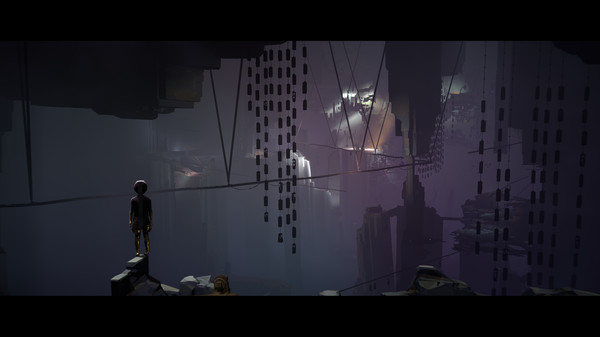
Vane consists entirely of such episodes – you enter (or fly in) somewhere, realize that it’s not a tiny room, but rather a large location, and start solving “puzzles”. There would be nothing wrong with this if the game at least somehow indicated the objects with which you are allowed to interact, but it does this only half the time. For example, if you have to push a balloon, it’s sure to glow. But the perches and bars on which the crows can sit are not marked – you have to try everything yourself.
It is clear why this was done. The reason is not to make you think or look for logic in the world they created. They wanted to stretch the gameplay – if you know what to do, you can get through the game in about an hour and a half. And those who can’t find all the solutions quickly will have to spend around two or even three hours. In this case, not once does the player feel clever, making out with the local puzzles, because he’s just trying to do something with the objects scattered here and there. If you’re lucky, you’ll move on.
SYSTEM REQUIREMENTS
MINIMUM:
64-bit processor and operating system required
OS: WIndows 7/8/10, 64-bit
Processor: 3.0Ghz CPU Dual Core
RAM: 4 GB
Graphics Card: Geforce GTX 750 / Radeon R7 260X
DirectX: Version 11
Disk space: 3 GB
Sound Card: DirectX compatible sound card
RECOMMENDED:
64bit processor and operating system required
OS: WIndows 7/8/10, 64-bit
Processor: 2.4GHz Quad Core CPU
RAM: 8 GB
Graphics Card: Geforce GTX 780 / Radeon R9 290X
DirectX: Version 11
Disk space: 3 GB
Sound Card: DirectX compatible sound card

